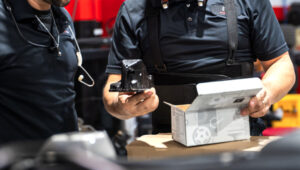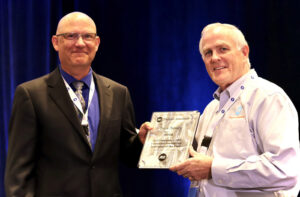Three new factors have emerged in the DIFM market that can provide significant competitive advantages to distributors who supply parts to U.S. repair outlets
Fort Wayne, Ind.—Traditionally, four factors have been critical in shaping a distributor’s competitive success in the light vehicle aftermarket: ordering systems, product availability, product pricing, and timely parts delivery.
“However, three new competitive factors have emerged in the rapidly evolving Do-It-For-Me (DIFM) market that can provide significant competitive advantages to distributors who supply parts to the more than 210,000 light vehicle repair outlets across the U.S.,” stated a recent Lang iReport. The following are key takeaways from the analysis.
Three Emerging Competitive Factors
As the aftermarket changes, prompted by the growth of eCommerce, greater vehicle complexity, and a host of other developments, three factors are emerging that can provide significant advantages to distributors in the highly-competitive DIFM market.
Factor 1: Technical Information
The growing complexity of vehicles has made technical information critical for rapid vehicle diagnostics and repair.
Most automotive technical information originates from carmakers and parts manufacturers. As the installer’s needs for this information increases, distributors can use the opportunity to partner with carmakers and parts manufacturers to promote the use of their products and brands.
Providing technical information to DIFM (commercial) accounts can give distributors a powerful advantage over competitors and enable them to provide benefits to installers that often are not available from other parts sources.
Factor 2: Customer Acquisition
Customer acquisition is one of the greatest challenges repair outlets face, particularly as the growing strength of vehicle dealers and the increased complexity of vehicles have made customers more discriminating in their selection of repair outlets.
By helping installers to attract service bay customers, distributors can provide added value to DIFM (commercial) outlets beyond the services commonly offered by competitors. Banner programs and o2o transactions are two means by which distributors can help installers to attract customers.
— Banner Programs
Banner programs provide warehouses and jobbers with marketing and advertising assistance, which they can pass on to repair outlets to help attract customers to their bays. Banner programs enable installers to attract customers and reinforce relationships between distributors and installers by helping to expand the business of installers and, therefore, the volume of parts they purchase from distributors.
— Online to Offline
Online to Offline (o2o) transactions are gaining traction in the aftermarket and can enable distributors to assist installers in attracting customers. In o2o auto repair, distributors can enable consumers to purchase parts online and schedule auto repair from an authorized network of repair outlets.
So far, eCommerce platforms have taken the lead in o2o automotive repair, particularly in tire sales, battery replacement, and a growing array of common repair jobs. However, brick-and-mortar distributors can develop ways to use o2o strategies to boost their customers’ bay activity. This will become increasingly important for brick-and-mortar distributors as eCommerce platforms expand their o2o auto repair presence and disrupt auto repair sales and the distribution of parts for those repairs.
Factor 3: Necessary Parts on Hand
Quickly acquiring the parts needed to complete repairs is one of the greatest problems faced by installers in rapidly performing vehicle repair and satisfying their customers. The most common solution in today’s market is for distributors to provide rapid delivery of auto parts to repair outlets.
However, this takes time and adds greatly to the distributors’ expense burden. There are two ways in which distributors can reduce the need for rapid parts delivery.
• Distributors can enable Installers to stock key products that they use on a repetitive basis, so that when jobs arrive in their bays the need to wait for parts delivery is greatly reduced.
• o2o transactions can decrease the need for quick delivery of parts.
Distributors can allow customers to order repair parts they wish to have installed. Distributors can then deliver the required parts to installers before the vehicle arrives at the repair outlet. o2o transactions are increasing across a broad range of auto repair jobs and even accessory sales.
These two strategies can save time and expenses for installers and distributors, while providing distributors with a decisive advantage over competitors.






Comments are closed.